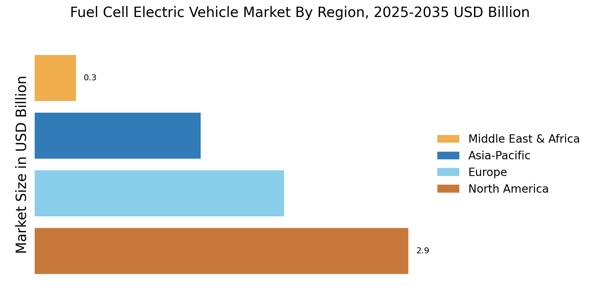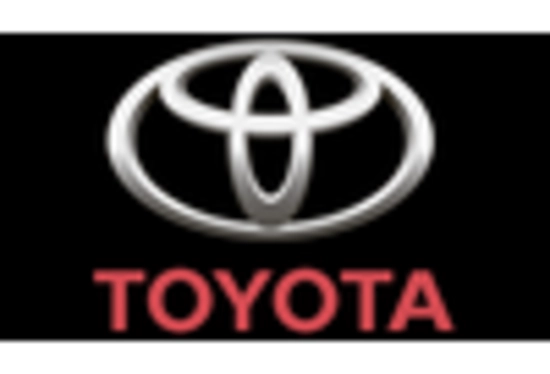The Fuel Cell Electric Vehicle Market (FCEV) market is currently characterized by a dynamic competitive landscape, driven by technological advancements, regulatory support for clean energy, and increasing consumer demand for sustainable transportation solutions. Major players such as Toyota Motor Corporation (Japan), Hyundai Motor Company (South Korea), and Ballard Power Systems Inc. (Canada) are at the forefront, each adopting distinct strategies to enhance their market positioning. Toyota, for instance, continues to leverage its extensive experience in hydrogen fuel cell technology, focusing on innovation and partnerships to expand its FCEV offerings. Meanwhile, Hyundai is actively pursuing regional expansion, particularly in Europe and North America, where it aims to establish a robust infrastructure for hydrogen refueling stations, thereby enhancing the usability of its vehicles. Ballard Power Systems, on the other hand, emphasizes strategic collaborations with various automotive manufacturers to integrate its fuel cell technology into a broader range of applications, thus shaping a competitive environment that is increasingly interconnected.
In terms of business tactics, companies are localizing manufacturing and optimizing supply chains to enhance efficiency and reduce costs. The FCEV market appears moderately fragmented, with a mix of established automotive giants and emerging players. This structure allows for a diverse range of innovations and competitive strategies, as key players strive to differentiate themselves through technological advancements and strategic partnerships.
In August 2025, Toyota Motor Corporation (Japan) announced a collaboration with a leading energy provider to develop a network of hydrogen refueling stations across Japan. This initiative is strategically significant as it not only supports the adoption of FCEVs but also positions Toyota as a leader in the hydrogen economy, potentially increasing consumer confidence in hydrogen as a viable alternative to traditional fuels.
In September 2025, Hyundai Motor Company (South Korea) unveiled its latest FCEV model, which features enhanced range and efficiency. This launch is indicative of Hyundai's commitment to innovation and its strategy to capture a larger share of the FCEV market. By continuously improving vehicle performance, Hyundai aims to attract environmentally conscious consumers and solidify its reputation as a pioneer in sustainable mobility.
In July 2025, Ballard Power Systems Inc. (Canada) secured a significant contract with a major logistics company to supply fuel cell systems for their fleet of delivery vehicles. This contract underscores the growing recognition of fuel cell technology in commercial applications, suggesting a shift in market dynamics where FCEVs are increasingly seen as viable solutions for heavy-duty transportation.
As of October 2025, the competitive trends in the FCEV market are heavily influenced by digitalization, sustainability initiatives, and the integration of artificial intelligence in vehicle design and manufacturing processes. Strategic alliances are becoming more prevalent, as companies recognize the need for collaboration to accelerate innovation and enhance supply chain reliability. Looking ahead, the competitive differentiation in the FCEV market is likely to evolve from traditional price-based competition to a focus on technological innovation and sustainable practices, reflecting a broader shift towards environmentally responsible transportation solutions.


















Leave a Comment